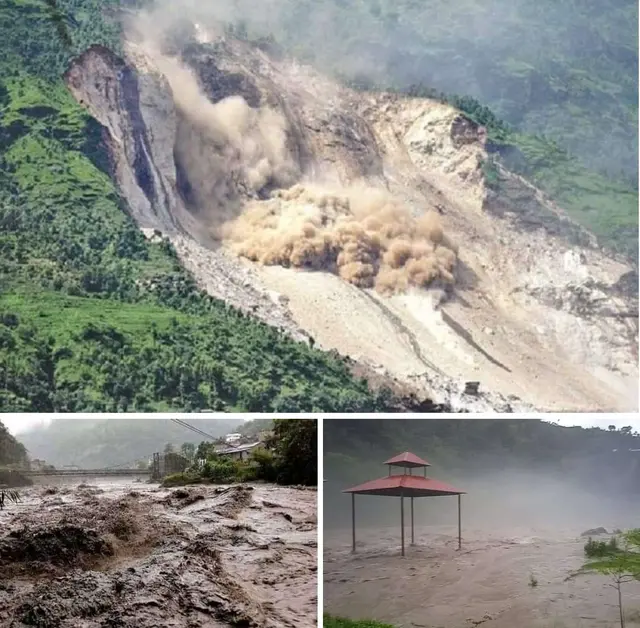By APD writerShristi Kafle
As Nepal has been struggling against the second wave of the COVID-19 pandemic, the monsoon-induced calamity has added more tragedy.
Floods and landslides across the country have created havoc since last week, as many lives have been lost and hundreds of families have been displaced.
Amid such, the Indian media has once again created a false narrative which has upset the Nepali public, who are already suffering with impacts of pandemic and disaster.
Indian Media News24 reported last week that China has designed a plan against India via Nepal through the use of water. It accused China of building a hydro electric project in the bordering Sindhupalchowk district by deviating the way of at least 11 rivers. "Thus, the increasing pressure in the rivers has increased the risk of floods in Nepal," it further said.
The media reported that the latest flood has impacted not just Nepal, but even India, particularly the Bihar state. "Half of the Bihar can face the inundation," it said. It also shared that at least 1.8 million Nepali could be affected this time.
Monsoon-induced disasters in Nepal are yearly phenomenon in the Himalayan country, due to vulnerable geography and most importantly, the gradual impacts of climate change. The rivers flow from north to south, Nepal to India, since centuries, which is a basic information ignored by the Indian media.
However, the Indian media tried to reject the natural disaster stating that it’s a "Xi Jinping's Water Plan" against India via Nepal. It also repeatedly used the terms like "Dragon's Ploy" and 'Nepal-India in Danger" to create a false narrative among the public.
Discarding the natural factors, the Indian media accused China of making plans against India through floods, stating that China is working in at least 6 hydropower projects in Sindhupalchowk district.
The 15-minute- long report presented the baseless reporting, which has been viewed for at least 32,000 times in its YouTube channel alone, and filled with hateful comments.
The Indian media has been facing a lot of criticism for its coverage of the tragedy. People have taken the social media platforms like Facebook and Twitter to express their anger over such false and insensitive narratives.
Priyasha Maharjan commented in YouTube, "Shame on you and your journalism. Stop blaming China for everything your government cannot manage and stop using Nepal in your fight."
"Please don’t make the natural disaster as propaganda. Please try to be conscious and control your madness," another comment reads.
Nepali People have complained that the coverage had been insensitive and shameful, among other things. There are stories aplenty of how the Indian media, mostly the TV channels, have covered the latest flood. People have mostly commented with "Rest in Peace Indian Media."
Anjali Rajbanshi said, "You should first learn about Nepal and Indian geography."
Arun Budhathoki, a Nepali journalist, tweeted, "I've many friends in India but please this sort of garbage is too much to handle." Another journalist Santosh Ghimire tweeted, "Propaganda machine."
Krishna Kumal, an engineer, said, "Are they so insensitive towards Nepalese?"
Many in Nepal feel that the "outsized" coverage of the Indian media is done with an aim to shade the efforts being made by the northern neighbor China to help Nepal fight the pandemic.
China has been supporting Nepal through vaccines and essential medical supplies to battle the shortage of public health infrastructures and help save lives. It has already sent 1.8 million doses of vaccines to Nepal as part of grant assistance.
This is not the first time that the Indian media has faced criticism in Nepal. It had received similar backlash in the past several times including the insensitive coverage of devastating earthquake of 2015.
Even the Indian audiences have enough frustrations against the Indian TV channels. Amid such, experts believe that it is time now for India's news channel to introspect and do some credible and factual reporting and enhance the declining quality of Indian media.
(ASIA PACIFIC DAILY)
 简体中文
简体中文




